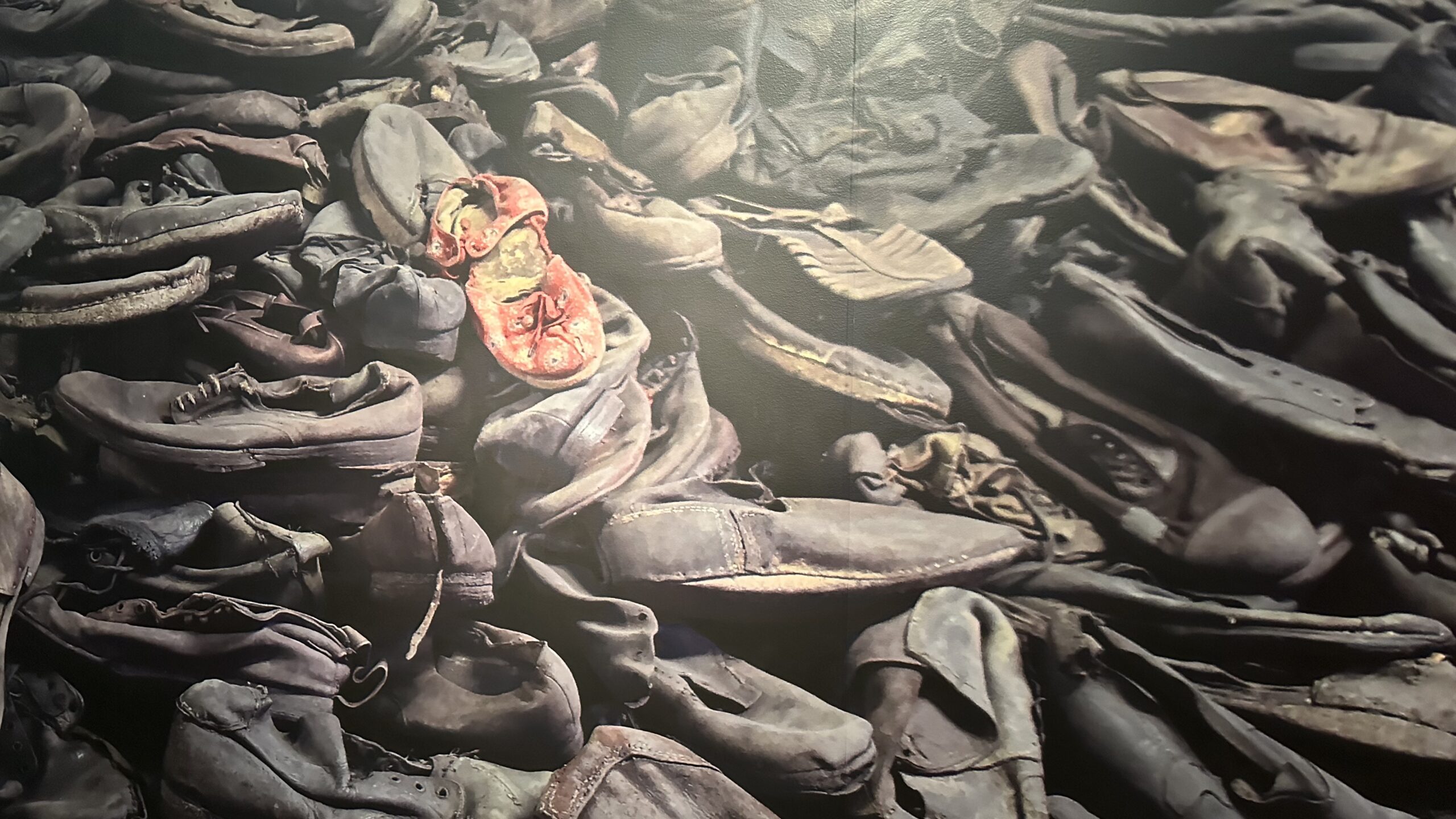Jot down the first thing that comes to your mind.
Last weekend I went to see an special exhibition on the Royal Ontario Museum in Toronto: Auschwitz. Not long ago. Not far away. The title alone give me chills. The display is out there for years. The curators couldn’t have known with certainty about everything that would happen in the world after the opening. But if you ask me, it sounds prophetic.
The shoes
Everything is heartbreaking in this exhibit. There are some quiet places with sofas if you need to take a break. This is from emotional toll from the horror that some human beings were capable of inflicting on others. I don’t know what impressed me the most. But at the very beginning, and at some other points, you see shoes. Inmate shoes, children shoes, old people shoes. The SS guards took them off of the people right at the entrance of the concentration camp. And they were piled for nobody to use them. I just keep asking myself, Why?!



Kanada
When Jewish deportees arrived in Auschwitz, they had been robbed of their businesses, homes, savings, and anything that did not fit into a suitcase. On the Rampe (arrival ramp), they were stripped of their last few possessions. The formal procedure:
- German money was deposited into an SS bank account possessions.
- Foreign currency, valuables, and precious metals were sent to SS headquarters.
- Unusable clothing and hair went to the Reich Ministry of Economy for use as raw materials in industrial production.
- All other usable items were given to German households.
Throughout the camp’s existence, the sorting sheds were known as Kanada—named by inmates because Canada represented unlimited resources that were out of reach. These sheds overflowed with goods, and an average of five freight cars filled with goods left Auschwitz daily.
Auschwitz. Not long ago. Not far away.
The inmates
The prisoners’ faces, the clothes they used, the bunk beds they slept on, and the inhumane way they were treated. All of that is too much to bear. The food was vile and not enough to nourish them. They were separated from their loved ones. There are several videos with testimonies from survivors relating the pure evil way the Nazi regime treated them. And what was their crime? None. They simply didn’t fit the norm of the established regime. They were Jews, gay people, Jehovah’s witnesses, or other marginalized groups and political enemies.





Needless to say, if you have the opportunity to attend this exhibition, I highly recommend it. Every one needs to know the horrors that were perpetrated in Auschwitz. As can be seen, I barely touched the surface here.
Every day I watch the news, I see more and more similarities between current events and what happened in Germany in the 1930s. And every day I pray that we don’t reach that situation again. I only hope it’s not too late.

You must be logged in to post a comment.